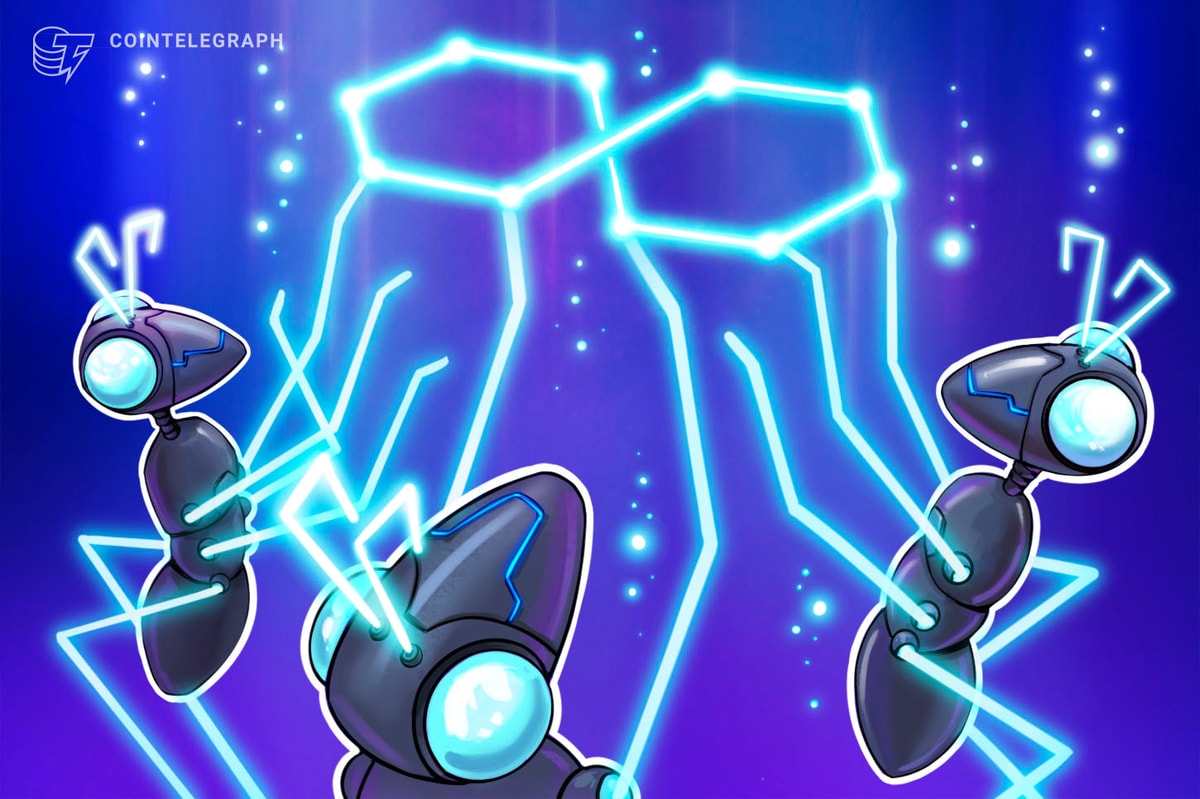TagWizz is doubling down on the role education plays in the future of the metaverse.
getty
Decades ago, when the gaming industry was still in its infancy, it was common to see kids spending their time trying their hands out at vintage arcade games like Pac-Man, Space Invaders, and Donkey Kong. Yet, since those heralded days of the 70s, the gaming industry has undergone innumerable iterations and changes. From computer games to console gaming, the future of gaming is more immersive than ever with the advent of virtual reality and the metaverse. However, as the industry has evolved how people game, it has also expanded its utility beyond entertainment.
“Games are more than just tools to pass the time and have fun with your friends. We can find elements of gaming now in other areas of entertainment, digital marketing, the workplace, and lifestyle. But I believe one of the most effective spaces for gamification should be education,” says Adrian Gimate-Welsh, founder of a full-service game development studio called TagWizz.
Adrian believes gamification is currently underutilized in education, a space he touts could be its most productive area. His company, TagWizz, has supported and collaborated with other video game and business companies, providing services like 2D and 3D art concept and design, development, quality assurance, backend development, and customer support services. The nature of TagWizz’s clients is allowing the company expanded opportunities to make games and apps with an educational tilt in mind.
Below is a condensed version of an interview I had with Adrian Gimate-Welsh discussing his career, TagWizz, and his ideas about gaming as an academic tool.
Rod Berger: Thanks for sitting down with me to talk about your 25 years of work in the gaming industry.
Adrian Gimate-Welsh: Good to be here.
Berger: I’d like to start by learning more about your life before your career. Help me understand the journey that led to your current pursuits.
Gimate-Welsh: I was born in Mexico to a Mexican dad and a French mom. My first contact with video games was nothing special. Like other kids at the time, I was exposed to arcade games at the shopping mall, spending my parents’ hard-earned money. I was around eight when I first played Pac-Man, and the experience inspired my interest in games.
We moved to France when I was ten, and it took me a few years to settle. But when I did, the bug for gaming was still there. I eventually ended up at Paris University and graduated with a degree in Computer Science Engineering. Years before TagWizz, I joined Ubisoft’s mobile game startup Gameloft and participated in developing some of the world’s first mobile games.
By 2005, I had founded Gameloft’s offices in Mexico, a low-cost strategic location that helped the video game giant become the undisputed leader in the Java-Brew mobile game battle taking place back then.
Ubisoft is France’s largest video game developer company and one of the world’s largest. Gameloft came after my time at Ubisoft. I eventually became the coordinator of Gameloft’s worldwide Android production based in New York. I was also behind the world’s first iPhone and native Android games.
Berger: Let’s move on to TagWizz. What were the origins of the name?
Gimate-Welsh: While based in New York, a friend and I thought of this video game where you tagged other players, similar to what eventually would become Pokemon Go. When I moved back to Mexico, I wanted to develop that game, which was one reason I started my own studio. From that idea came the first part of the company’s name. The “Wizz” refers to wizards as a reference to our experience and skills. Hence, TagWizz.
Berger: What kind of games have you and your team worked on at TagWizz? You hinted earlier about the potential of gamification in education using the concept of the metaverse. Have you worked on any metaverse projects recently?
CEO and Founder of TagWizz, Adrian Gimate-Welsh is a Mexican and French engineer and video game … [+]
TagWizz
Gimate-Welsh: We have, actually. We’re developing a metaverse gaming experience using the Roblox platform, which has a gargantuan number of nearly 58 million daily active users. 67% of their daily user base is under 16 years old. Now you tell me, isn’t there a huge potential for education on gaming platforms that big? And that’s only one metaverse among many others. So, how do we introduce educational material in digital spaces that are already recruiting legions of next-generation citizens? In other words, how do we use metaverses to create more impactful virtual schools?
At its core, gamification is applying game design and mechanics within a non-game context. Because how else can you retain kids’ attention in today’s world, where the attention span has reduced to an average of eight seconds through social media, and the need for immediate gratification has become so strong?
In TagWizz, we have successfully participated in these types of projects. For instance, a Capital Foundation’s app targeted disenfranchised populations in some Central and Southern American countries by teaching them personal finances. Also, there was a project with Fictive’s G-Book, which gamified children’s stories to boost the reading culture in the U.S.
I don’t see why we should stop short of implementing these concepts into the metaverse when multiple metaverses are most likely to be the next Internet paradigm.
Berger: Your efforts appear to be expanding gamification environments. What key benefits to education come to mind from your experience with gamification?
Gimate-Welsh: For one, it causes higher levels of engagement with the subject matter. People learn more when they are more engaged. They also retain more of what is taught if presented in an appealing vehicle like gaming.
We talked about attention spans getting shorter, but children can sometimes sit for hours inside a digital life or while playing video games. For their sake, we need to ensure that the inevitable rise of a multitude of digital communities will reflect our values and serve as tools for their knowledge and cognition development. I wouldn’t be surprised if, at one point, kids are citizens in physical countries while simultaneously “citizens” of several other digital worlds. That’s what the metaverses will bring about.
If we don’t use these environments to educate our children in time, we might be rearing a generation unaware of what they’re learning. The odds are that we will have diverse metaverse societies at one point in the future. They will have their own cultures, values, rules, and regulators. They will integrate public services, crypto-banking, commerce, working places, as well as excellent schools. This future might look scary to some, but it’s not necessarily dystopian, at least not if we proactively address it for better purposes.
Gamification has seen increased use inside classrooms for some time, helping with motivation and student engagement while streamlining teacher workloads. As tech-driven learning tools gain an even stronger foothold, game companies are vigorously waving their hands to be recognized for their future advancements. They are asking for a seat at the table to bring their knowledge base and visions of a changing virtual space to the forefront of the education community.
Adrian Gimate-Welsh sees gamification in the classroom expanding as the emergence of the metaverse becomes more actualized. As a result, he is doubling down on making games through TagWizz with an educational emphasis attached. He envisions a transition to where gamification is not just another buzzword but grows into a ubiquitous influence on education everywhere.
Interviews have been edited and condensed for clarity.
Read More: news.google.com









 Bitcoin
Bitcoin  Ethereum
Ethereum  Tether
Tether  XRP
XRP  Solana
Solana  USDC
USDC  Dogecoin
Dogecoin  Cardano
Cardano  TRON
TRON  Lido Staked Ether
Lido Staked Ether  Wrapped Bitcoin
Wrapped Bitcoin  Sui
Sui  Hyperliquid
Hyperliquid  Wrapped stETH
Wrapped stETH  Chainlink
Chainlink  Avalanche
Avalanche  Stellar
Stellar  Shiba Inu
Shiba Inu  Bitcoin Cash
Bitcoin Cash  LEO Token
LEO Token  Hedera
Hedera  Toncoin
Toncoin  Monero
Monero  Litecoin
Litecoin  WETH
WETH  Polkadot
Polkadot  Bitget Token
Bitget Token  USDS
USDS  Wrapped eETH
Wrapped eETH  Binance Bridged USDT (BNB Smart Chain)
Binance Bridged USDT (BNB Smart Chain)  Pepe
Pepe  Pi Network
Pi Network  Ethena USDe
Ethena USDe  WhiteBIT Coin
WhiteBIT Coin  Coinbase Wrapped BTC
Coinbase Wrapped BTC  Aave
Aave  Bittensor
Bittensor  Uniswap
Uniswap  Dai
Dai  NEAR Protocol
NEAR Protocol  Aptos
Aptos  Jito Staked SOL
Jito Staked SOL  OKB
OKB  Ondo
Ondo  BlackRock USD Institutional Digital Liquidity Fund
BlackRock USD Institutional Digital Liquidity Fund  Cronos
Cronos  Ethereum Classic
Ethereum Classic  Internet Computer
Internet Computer